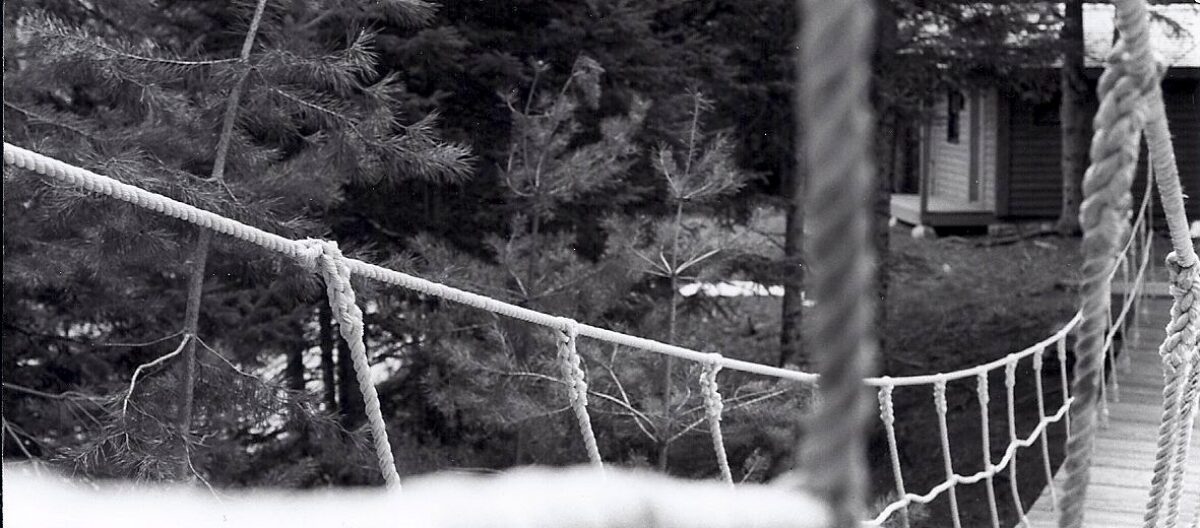NATIONAL PARKS
Backwoods Blog;
in the woods and on the road…
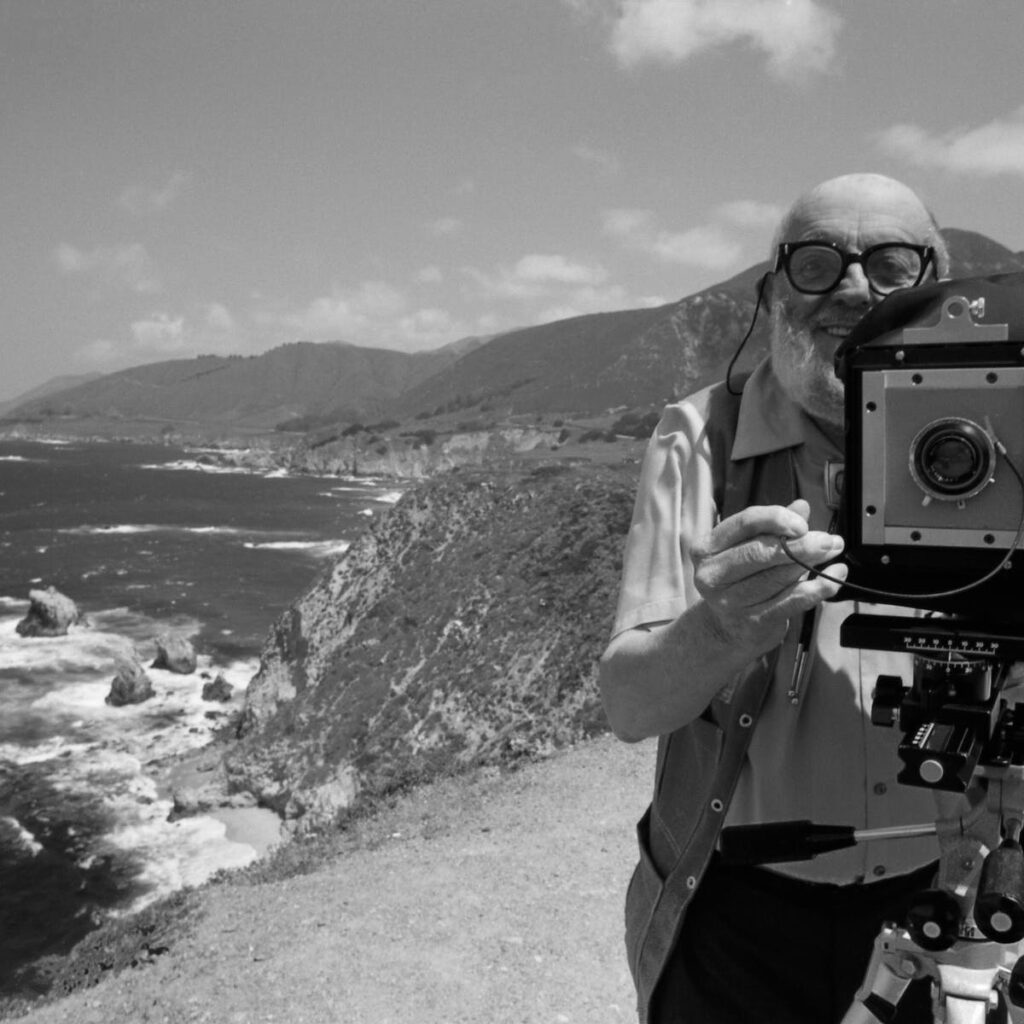
Ansel Adams and his camera (1902-1984)
The last 100 days have been an uneven and relentless series of events and executive orders that make one’s head spin. The dismantling of the United States federal government (down-sizing) is affecting national agencies and civil service employees in every sector of the government. One of the first agencies to experience the cuts is the National Parks Service with over 1,000 probationary workers released and the listing of 32 National Park Service facilities to have their leases cancelled by October for cost savings. The Alt National Park Service, a self-described resistance team using social media and social actions to voice its concerns and advocate for the protection of the US National Park System, has become an active and visible participant for continued democracy during this time of national social upheaval. I dug through earlier Backwoods Blog installments and found one about Ansel Adams whose photographs of National Parks in the 20th century defined the vision and importance of preserving public places in nature. This originally appeared in BB.107 (11.10.22). The camera and independent media are the tools of democracy. Use them well.
The earth never tires,
The earth is rude, silent, incomprehensible at first, Nature is
rude, silent, and incomprehensible at first,
Be not discouraged, keep on, there are divine things well
envelop’d,
I swear, to you there are divine things more beautiful than
words can tell.
Walt Whitman
It is this quality of faith which we must have in America today. Not the petty platitudes and protestations, not the cynical depreciations and escapisms, but the deep soul-searching beliefs, transcending pride and self-interest, that will create and perpetuate the concepts of an advanced society. The national parks are, indeed phenomena (an idea) of an advanced society; James Bryce once said that the concept of the national parks was America’s unique contribution to the democratic idea…We have been given the earth to live upon and enjoy. We have come up from the caves; predatory and primitive ages drift behind us. With almost the suddenness of a nova’s burst to glory we have entered a new dimension of thought and awareness of nature. We now dream of a time when the earth shall house one great family of cooperative beings. At least we have the promise of such a world even if the events of our immediate time suggest a return to tooth and claw, We hold the future in a delicate and precarious grasp, as one might draw a shimmering ephemerid from the clutches of a web. The heritage of the earth, direct or synthetic, provides us with physical life…We are now sufficiently advanced to consider resources other than materialistic, but they are tenuous, intangible, and vulnerable to misapplication. They are, in fact, the symbols of spiritual life – a vast impersonal (god-making) – transcending the confused myths and prescriptions that are presumed to clarify ethical and moral conduct. The clear realities of nature seen with the inner eye of the spirit reveal the ultimate echo of God.
The dawn wind in the High Sierra is not just a passage of cool air through forest conifers, but within the labyrinth of human consciousness becomes a stirring of some world-magic of most delicate persuasion. The grand lift of the Tetons is more than a mechanistic fold and faulting of the earth’s crust; it becomes a primal gesture of the earth beneath a greater sky. And on the ancient Acadian coast (Mt. Dessert Island) an even more ancient Atlantic surge disputes the granite headlands with more than the slow, crumbling erosion of the sea. Here are forces familiar with the aeons of creation, and with the aeons of the ending of the world…In contemplation of the eternal incarnations of the spirit which vibrate in every mountain, leaf, and particle of earth, in every cloud, stone, and flash of sunlight we make new discoveries on the planes of ethical and humane discernment, approaching the new society at last, proportionate to nature (itself).
-Ansel Adams
*
These observations on the great national parks were written as the introduction to Ansel Adams’s “My Camera in the National Parks,” a portfolio volume of 30 images published in 1950 and they appeared as the lead article in The Living Wilderness, autumn issue of that same year. He included the Walt Whitman poem in the beginning of his introduction, so I have included it as well. Elsewhere in the same poem (which I have not included), Whitman attempts to define America, and in doing so he refers to her athletic Democracy, which I take as a reminder that for a democracy to be strong it must be exercised. You can’t slack off and get away with it. Democracy is only in peril when we fail to recognize its frailty. It needs a continual working and re-working to maintain its viability. Our American experiment is only two hundred and forty six years old (with hopefully many more years to come), but the democracy of Nature extends to the very beginnings of biological life on the planet itself. The evolutionary plot-twists have eluded predictability, probabilities and all guarantees, but when looked at closely, it offers an optimistic outlook that life always finds a creative way to adapt and continue (which may include us, or not). For now, I choose to take a vigorous step forward, or perhaps a couple, towards the whatever may happen next…
In the woods,
Dave
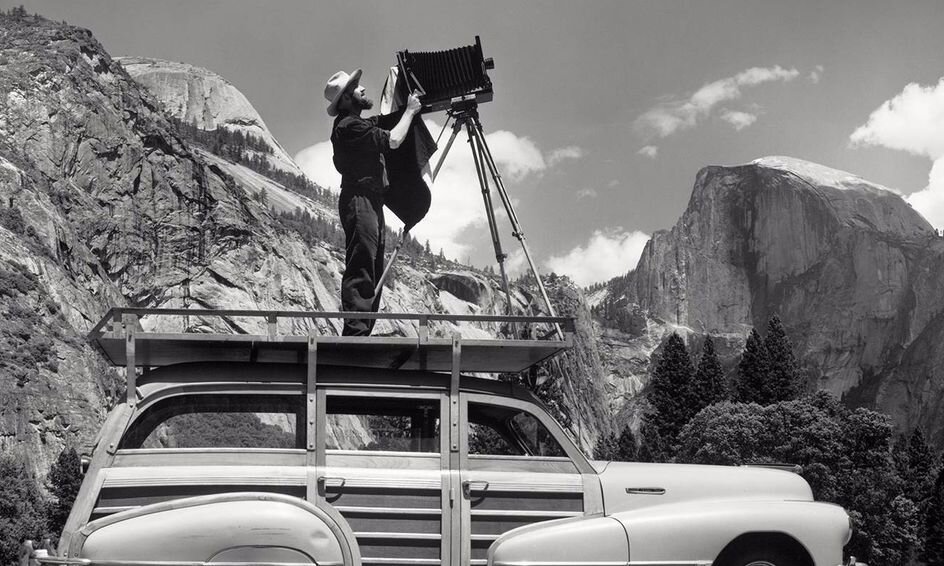
A photo of Ansel Adams taking a photo…
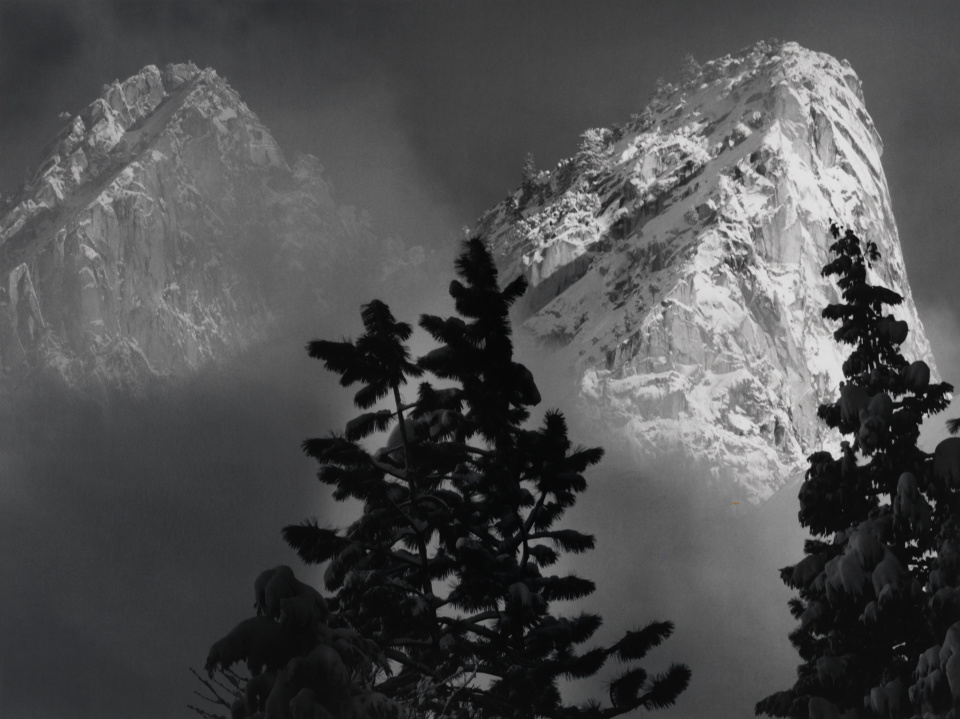
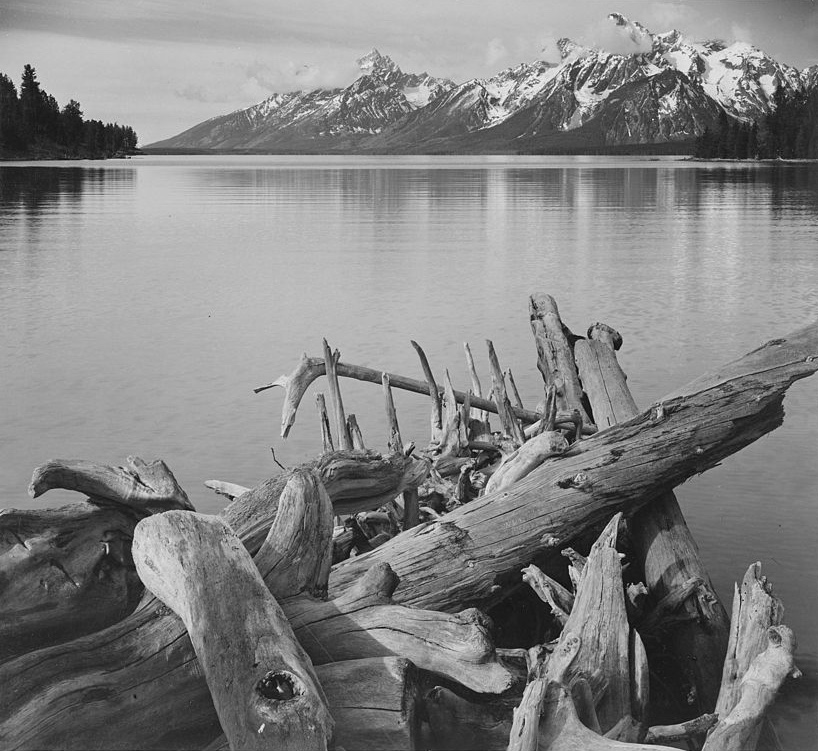
Driftwood on Shore of Jackson Lake, Wyoming (1941)
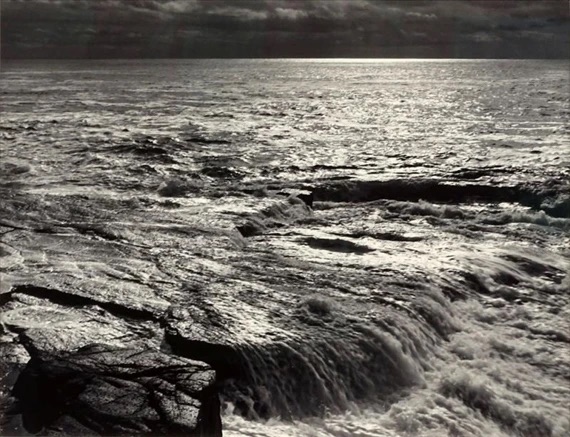
Ocean, Acadia National Park (1948)
